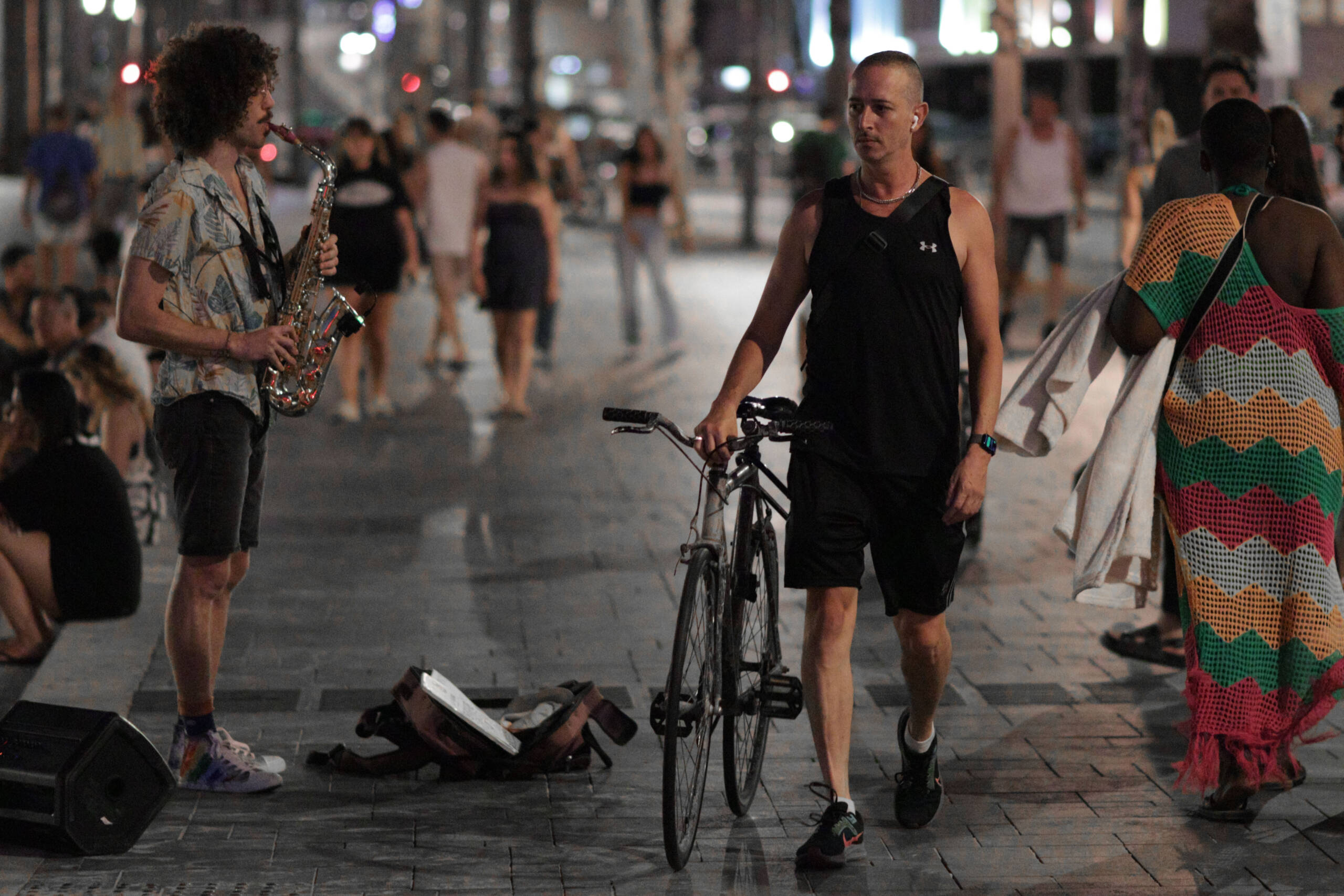There’s something almost cinematic about the way Tel Aviv holds its nights. The photo captures it perfectly: a saxophonist with a tumble of curly hair, dressed in a loose tropical shirt, stands on the promenade and plays into the warm air. His notes are invisible, but you can almost hear them spilling out of the horn, glinting against the glow of streetlights. The instrument’s brass surface catches the ambient light, as if it’s part of the city’s own rhythm. At his feet, a bag lies open, inviting the generosity of passersby who linger long enough to be caught in the spell of live music.

Walking right past him, a man pushes a bicycle with casual determination. He wears black sportswear, a smartwatch glowing faintly on his wrist, and earbuds tucked in, perhaps listening to something completely different, perhaps not noticing at all. Around him, the crowd is diverse—some sitting on the ground in little knots, some strolling slowly as if the night has no end, and one woman in a crocheted rainbow-pattern dress that feels like it was born for summer streets. Everyone shares the same space, yet they seem to move in parallel worlds, brushing by without colliding.
The scene itself feels timeless. Cities like Tel Aviv thrive because of this energy: the buskers who set up in corners and transform empty pavement into stages, the endless procession of people refusing to go home just yet, the mingling of leisure, routine, and chance encounters. It’s a portrait of a city that resists silence, a place where even the pauses between notes and footsteps feel alive. Nights like these are why Tel Aviv never quite turns the lights off.
Leave a Reply